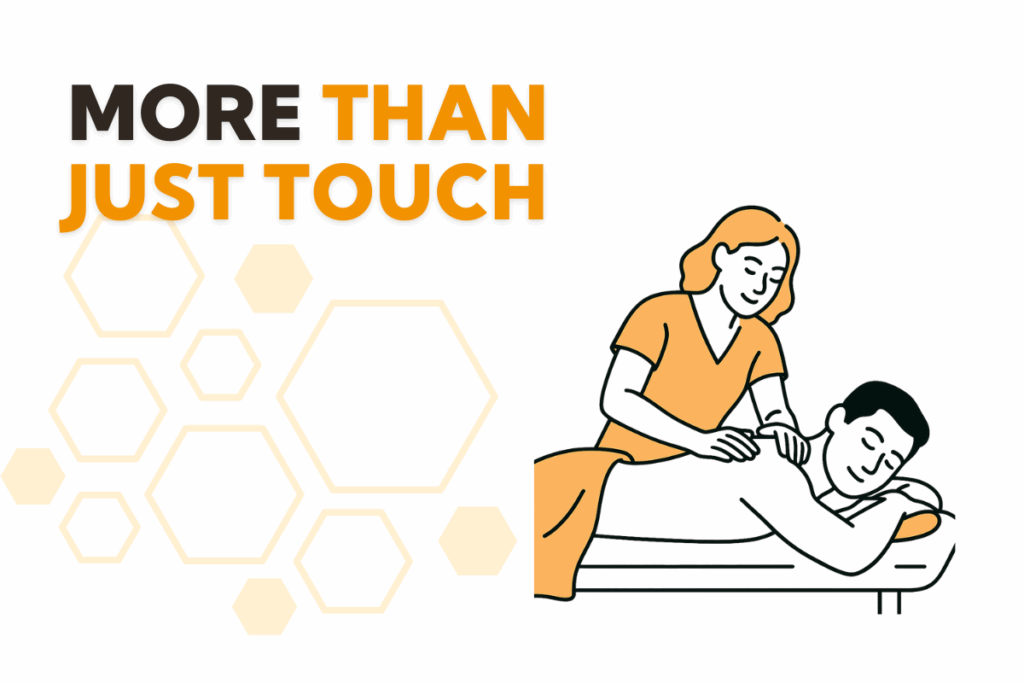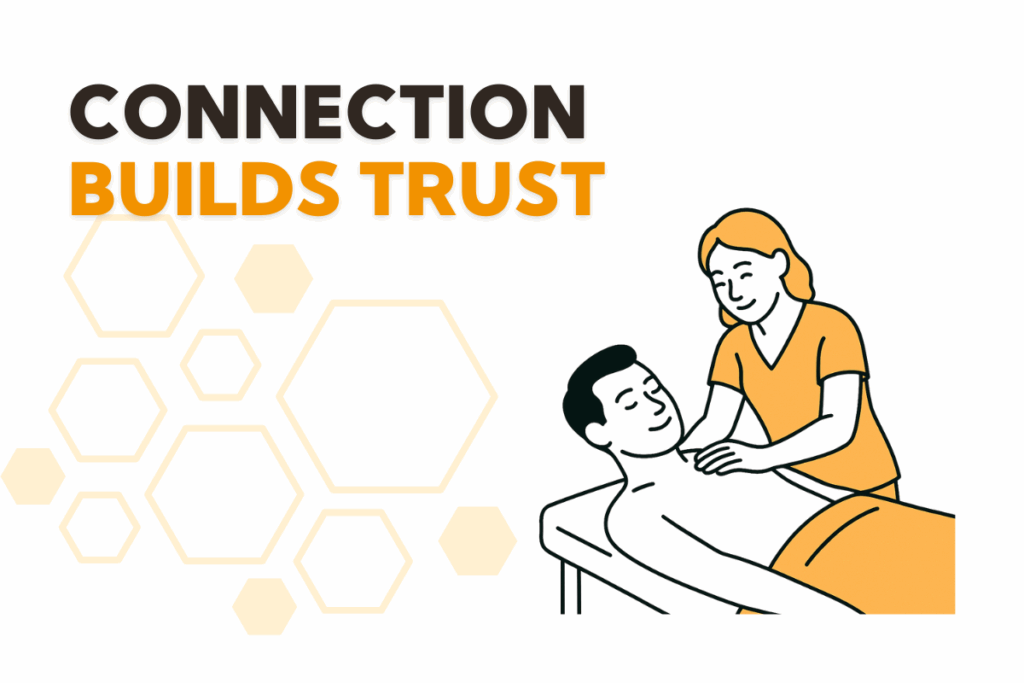They crave real connection—and it starts long before they’re on the table.
Ever had a new client book a massage, show up once, then disappear? It might not be your skills—or your pricing. It could be that they never felt welcomed. In a world where AI bots, generic messages, and automated systems are everywhere, clients are actively seeking a human-first experience. And for therapeutic massage clinics, that starts at first contact—not during the treatment.
The Hidden Disconnect That Pushes Clients Away
Automation Can Undermine Safety and Trust
From the moment someone lands on your website or clicks “book now,” their nervous system is already scanning for safety. Will I be listened to? Is this a clinic that will see me as a whole person, or just another appointment slot? If every step of that journey feels cold, transactional, or rushed, trust breaks down before it even begins.
What Clients Miss When the Experience Feels Cold
Clients aren’t just looking for reminders and appointment logistics. They’re seeking small signs of connection—tone, care, and acknowledgment. If the language in your automated messages is stiff or generic, it can create emotional distance before the treatment even begins.
Why Clinics End Up Sounding Robotic
The Therapist Burnout Loop
Massage clinic owners often wear every hat in the business—from practitioner to receptionist to marketing manager. To cope, it’s tempting to automate as much as possible. But when efficiency becomes the goal, empathy often falls to the side.
The Voice Gets Lost in the System
Automation tools don’t inherently create disconnection, but how they’re configured matters. Messages that sound polished but lack personality can give the impression that a real person isn’t behind the scenes. This weakens trust—and reduces the chance of rebooking.

What Clients Really Want from the Start
They Want to Feel Like a Person, Not a Profile
Most clients are not expecting luxury or perfection. They’re hoping for a warm, grounded experience. That starts with a human-sounding confirmation message, not a transactional receipt.
They Want to Know You’re Listening
Thoughtful intake forms and personalized follow-up messages matter. Clients feel valued when their goals and history are acknowledged, not just stored in a system. Referring back to past treatments—like checking in on an old shoulder injury—goes a long way in building trust.
Making the Experience More Human Without Burning Out
Start by Rewriting Your Key Messages
Look closely at your booking confirmation, reminders, and follow-ups. Do they sound like you? If not, it’s time for a refresh. A simple change in tone can turn a standard message into one that feels welcoming.
For example, instead of “Your appointment has been booked,” try “Thanks for booking, [Name]! Looking forward to meeting you Tuesday at 3PM. If it’s your first time, we’ll take a few minutes to chat before we begin.”
Add One Follow-Up Message That Feels Personal
Especially for first-time clients, a short message after their visit asking how they’re feeling can go a long way. It doesn’t need to be manual every time—automation can still deliver your real voice.
Use Tools That Support Personalization
Implementing automated intake forms with personality lets you gather client info in a way that feels like a conversation, not just data collection. And with business automation for massage therapists, you can set up touchpoints that reflect your tone without constant manual effort.
A Real Example of Change in Action
One Therapist’s Shift to Human-Centered Messaging
Alex, a registered massage therapist in Calgary, was puzzled when her client retention started slipping. Many people came once, complimented her skills—and never returned.
When she reviewed her client journey, she noticed every single message felt sterile and impersonal. Booking confirmations, reminders, and follow-ups were all templated and cold.
After rewriting each message to sound more like a conversation—with warm greetings, natural phrasing, and small personal touches—her rebooking rate improved by 25%. Clients even mentioned in person how much they appreciated the friendly tone.

Help Clients Find You Through the Right Search Terms
Meet People Where They’re Searching
Your ideal clients are likely typing in long-tail phrases like “massage therapist who listens [city]” or “personalized massage intake near me.” To match their intent, your website copy and blog content should reflect those phrases.
Optimize for Search Engines That Prioritize Conversation
Structure your website and blog posts using clear headers, questions, and natural answers. Incorporate phrases like “warm and welcoming massage clinic” to align with AI search tools and voice searches.
For more local SEO insights, Moz offers a helpful guide on optimizing local search presence.
Build Trust That Starts Before the First Touch
Real Care Begins With the First Interaction
You don’t need to choose between automation and authenticity. You can lead with presence while running a smooth, efficient clinic.
Let your voice come through in the small things—confirmation emails, intake forms, follow-up notes. Those are the touchpoints that shape your client’s perception of care.
Start by rewriting just one message this week. Check in with one first-time client personally. These small changes create ripples of trust that grow your business organically.
In The Hivecommunity, we believe the massage doesn’t begin on the table—it starts the moment someone feels seen.
FAQs
Use a conversational tone and include phrases you’d actually say in person. Adding the client’s name and a brief, friendly line like “Let me know if you have any questions before your session” makes a big difference.
No. You can write one authentic message and automate it. With the right setup, it’s just as efficient—but far more impactful.
Choose systems that let you customize your voice. Even automated messages can include names, session references, and warm sign-offs if your tools allow it.
Use staff management for massage clinics to create a consistent client experience while still allowing each therapist’s tone to shine through. This keeps the client journey cohesive and human, no matter who they’re booked with.


